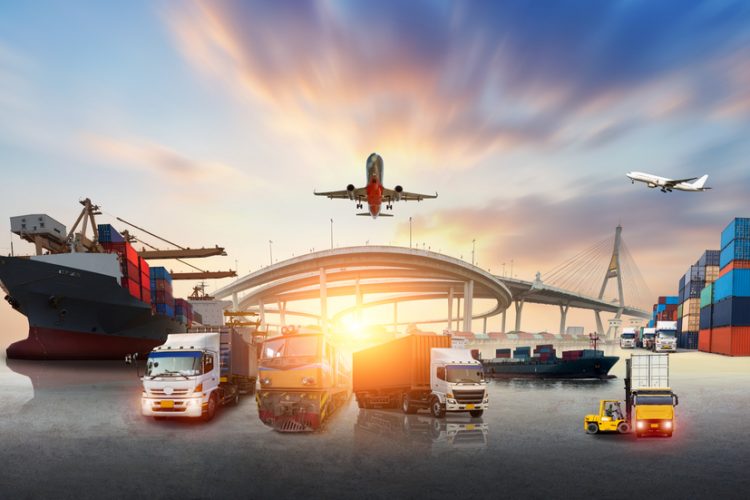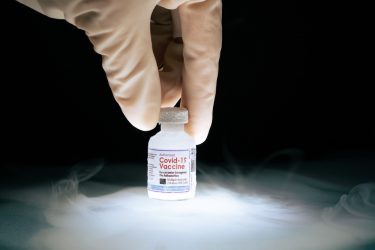Why real-time environmental monitoring is the most important aspect of the modern pharmaceutical cold chain
Posted: 24 March 2021 | Glenn Abood (rfxcel) | No comments yet
Glenn Abood, founder and CEO of rfxcel, explains how real-time environmental monitoring can combat supply chain shortcomings, providing companies with level of data integrity, traceability, transparency and security that is virtually beyond reproach.


Speed has been an overriding theme of the pandemic. What is the speed of transmission? Are rapid tests accurate? How quickly can vaccines be manufactured? How fast can they be distributed? How soon can we get back to normal?
In this same vein, information about the pandemic has proliferated at an astounding velocity. An August 2020 study reported that 23,634 unique documents about COVID-19 were published between 1 January and 30 June 2020.1 These included “research articles, letters, editorials, notes, and reviews”. In mid-December of 2020, the journal Nature wrote, “Around four percent of the world’s research output was devoted to the coronavirus in 2020,” which translates to “well over 100,000 articles” and “might even have passed 200,000 by early December”.2 It is doubtful this pace has slowed.
Our “need for speed” over the last year has had at least one significant consequence: what is correct today might be utterly wrong tomorrow, even when we have striven to obtain accurate data through the most precise and up-to-date means, as well as when we have verified and re-verified our results. Indeed, in 2021, certainty is rare and valuable commodity.
What do speed and certainty have to do with real-time environmental monitoring of the pharmaceutical cold chain? A lot, actually.
First, the pandemic quickly revealed shortcomings in, and placed heavy burdens on, every supply chain in the world. From dramatic, sustained drops in commercial air travel — passenger jets now carry more than 50 percent of global air freight volumes3 and flights are still down 39 percent from this time last year4 — to competition for increasingly scarce resources, supply chain actors in short order had to conduct risk assessments and act swiftly to keep ingredients and finished products moving.


Next, it has become more crucial than ever to safeguard what is transported through our supply chains, especially in the pharmaceutical cold chain. More people are vulnerable. More people absolutely must get their medications on time. Delivery must be reliable and drugs must be protected from temperature excursions and other threats, including diversion and theft, at every node of the cold chain.
Here it is prudent to pause and consider the financial ramifications of temperature excursions, the primary weakness of the pharmaceutical cold chain. The consensus is that excursions spoil approximately $15 billion worth of products annually. Factor in root cause analyses, the cost of replacement products and logistics losses, and that figure jumps to around $35 billion. With temperature-sensitive COVID-19 vaccines in the cold chain, these figures are certain to increase.
Only one instance has to go wrong to break the cold chain and have a cascade effect that can jeopardise lives. With so much at stake, real-time environmental monitoring should take precedent in the modern pharmaceutical cold chain.
The evolution of environmental monitoring
No matter the period or technology — a 19th Century railcar packed with produce and tons of ice or a modern-day jet “preighter” laden with vaccines — environmental monitoring has invariably aspired to achieve three goals: real-time observation of assets and their surroundings, safeguarding those assets during transit and using data to make decisions, mitigate problems and, ultimately, improve operations.
Technological milestones include indicators that show whether ambient temperature has dipped below prescribed parameters and data loggers that measure temperature, humidity and other conditions and store data to onboard memory. The latter were a notable leap and are still used today, but most provide data only after a shipment has arrived and the memory has been removed and read by a separate device; the demands of today’s cold chain outstrip their capabilities.
Full-featured, dynamic environmental monitoring became practical with the advent of the Internet of Things (IoT). Now, tiny IoT-enabled sensors communicate with a cloud server in real time, sending rich data about environmental conditions, location and physical disposition. The devices can monitor from a “top level,” such as the back of a refrigerated truck or a container in the belly of an airplane, through the pallet and case levels, right down to an individual item, such as vial inside a cooler.
Vaccines: a contemporary cold chain case study


We are in the midst of the most ambitious vaccine distribution scheme in history, so it is logical to discuss vaccines when advocating for environmental monitoring in the pharmaceutical cold chain.
Months before any COVID-19 vaccine was announced, there was much talk of a “vaccine surge” that would place unprecedented strain on the cold chain. There was hyperbole, for sure, but there were plenty of legitimate concerns, especially when Pfizer and BioNTech on 9 November 2020 announced their two-dose vaccine candidate, Comirnaty®, had to be transported and stored at ultra-cold temperatures.
Every vaccine is a cold chain product, so the Pfizer-BioNTech product was not completely a revelation about the urgent necessity to monitor shipments and avoid temperature excursions. There were certainly other logistics conundrums to dissect:
- Hand-offs at airports and other supply chain nodes would have to be timed to the second
- Security would have to be boosted to guard shipments
- Historically, vaccines have been tracked at the pallet level, not the dose level. Would the industry have to serialise every vial?
Delivery to the final destination — “the last mile” — was particularly troubling because it is a fragile, challenging stretch where the cold chain is often at its weakest, even under optimal conditions.
Supply chain shortcomings and the need to safeguard patients and products are the chief indications for the use of real-time environmental monitoring in the pharmaceutical cold chain”
What the vaccine cold chain needs, then, is speed and certainty. Real-time environmental monitoring, by definition, is fast. The IoT sensors communicate data virtually instantaneously. A good environmental monitoring solution will track every key cold chain parameter, including temperature, humidity, light, infrared, shock, vibration, motion, orientation and pressure. It will follow the shipment using the Global Positioning System (GPS) and relay the status of the battery power and the strength of the communications signal. It will do this on land, sea and air and send data anywhere in the world.
Real-time environmental monitoring means cold chain actors can take immediate action if a problem arises; its rich set of features brings visibility from one end of the cold chain to the other. It provides the speed and certainty the pharmaceutical cold chain needs as hundreds of billions of products, including COVID-19 vaccines, must get safely from manufacturing sites and warehouses to hospitals, clinics, pharmacies and people’s homes.
Conclusion
Supply chain shortcomings and the need to safeguard patients and products are the chief indications for the use of real-time environmental monitoring in the pharmaceutical cold chain. Continuing the metaphor, the technology has revealed itself as a panacea for the cold chain because, when done right, it targets and eliminates its disorders. It amounts to continuous direct observation that renders a level of data integrity, traceability, transparency and security that is virtually beyond reproach. Real-time environmental monitoring is the best option for attaining the speed and certainty requisite for today’s circumstances — and for every day ahead of us.
About the author
Glenn Abood is the founder and Chief Executive Officer of rfxcel, a leading supply chain track and trace solutions provider. He was compelled to start the company in 2003 when he realised consumers could not check the authenticity of their prescription drugs. Since then, he has overseen the development of leading-edge serialisation and track and trace solutions that are at work across a variety of industries, including pharma, food and beverage, government and consumer goods.
References
- Teixeira da Silva J, Tsigaris P, Erfanmanesh M. Publishing volumes in major databases related to Covid-19. Scientometrics [Internet]. 2020 [cited February 2021];126(1):831-842. Available from: https://link.springer.com/article/10.1007/s11192-020-03675-3
- Else H. How a torrent of COVID science changed research publishing — in seven charts. Nature [Internet]. 2020 [cited February 2021];588(7839):553-553. Available from: https://www.nature.com/articles/d41586-020-03564-y
- Kulisch E. For airlines in 2020, cargo no substitute for people – FreightWaves [Internet]. FreightWaves. 2021 [cited February 2021]. Available from: https://www.freightwaves.com/news/for-airlines-cargo-no-substitute-for-people
- Worldwide O. COVID-19 and Airline Schedules | OAG [Internet]. Oag.com. 2021 [cited March 2021]. Available from: https://www.oag.com/coronavirus-airline-schedules-data
Related topics
Biologics, Cold Chain Supply, Distribution & Logistics, Environmental Monitoring, Good Distribution Practice (GDP), Supply Chain, Therapeutics, Vaccines









